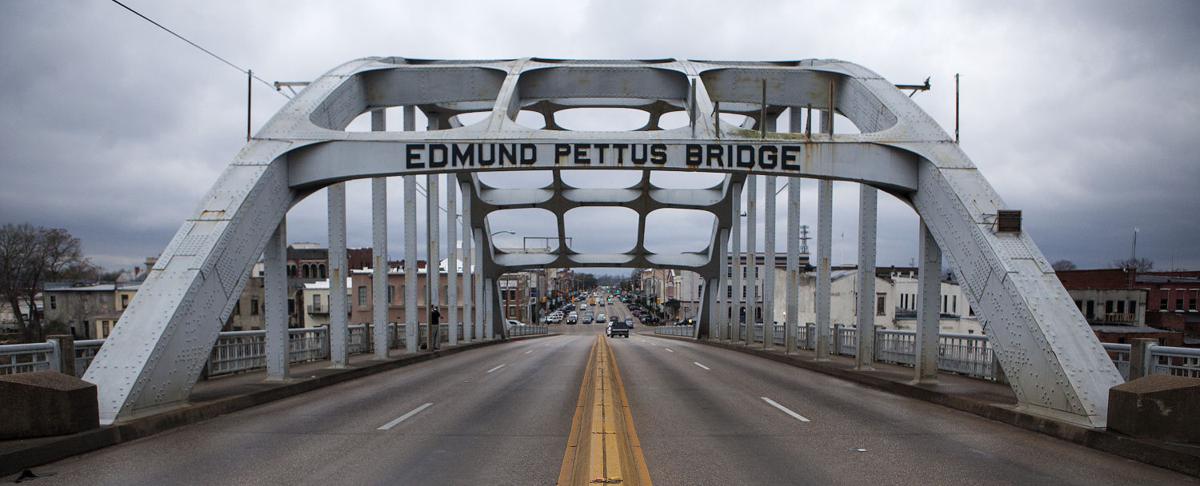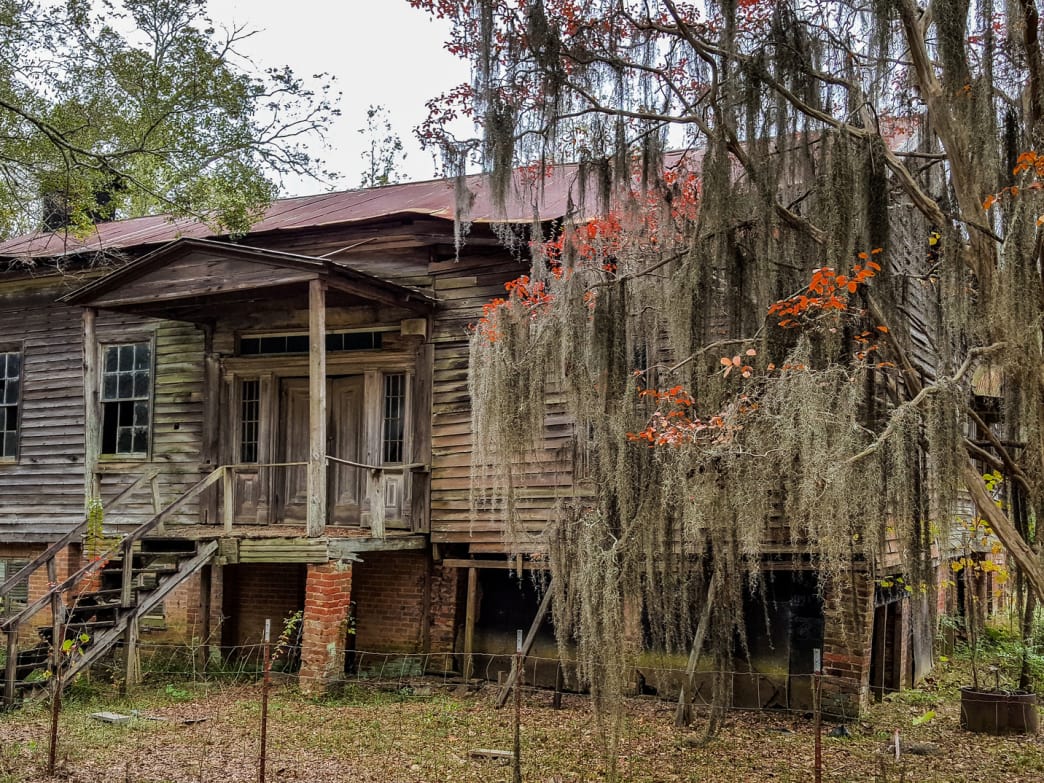Sturdivant Hall Has a Very Rich History
Sturdivant Hall, which is also known as the Witt-Parkman-Gillman House is located at 713 Mabry street, just south of the Jeff Davis Highway, which is the old highway 40 in Selma Alabama.
Because of its history, architecture, and folklore, it is one of the most popular of the Montgomery day trips to the Alabama backroad sites.
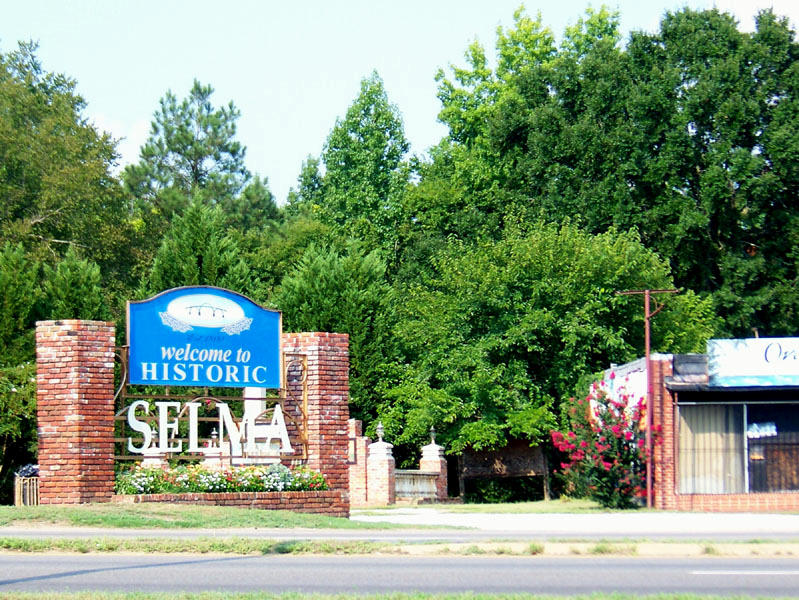 Selma Alabama Welcome Sign
Selma Alabama Welcome SignThe History of Sturdivant Hall
It is a historic Greek revival mansion as well as a house museum that is rich in history, architecture, as well as some very interesting folklore.
Originally complete in early 1856, it was added to the National Register of Historic Places on January 18th, 1973.
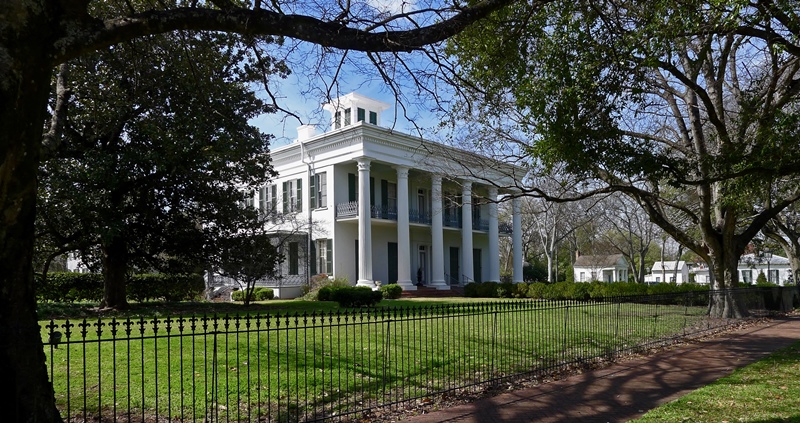 Sturdivant Hall
Sturdivant HallIt was designed by the famous architect Thomas Lee and was built for Colonel Edward Watts and has been a tourist drawing point for over 100 years to the Selma backroads area.
It is considered to be so elegant that the man that did architectural work on the White House interiors, Edward Vason Jones, called it one of the, if not the finest, mansions in the entire southeastern United States.
The history of Sturdivant Hall is just as interesting as the architecture and the folklore.
The main reason for this is quite simple; it took over 4 years to build and has had some very interesting owners.
It was started in the year 1852 but was not finished until the fall of 1856, and once it was completed, and the Edward Watts family moved in.
The Watts family lived in the house until 1864 and made the decision to move to Texas.
They sold the house for $65,000, a massive amount of money for that time, to a local banker, John McGee Parkman.
At the end of the civil war Mr. Parkman was named the President of the Frist National Bank of Selma, which dealt in cotton speculations.
It was not long before the bank, under Parkman’s leadership, begins to experience heavy losses.
The losses were so excessive that the military governor of Alabama at that time, Wayne Swayne, instructed his Reconstructive authorities to take possession of the bank and arrested Parkman.
He was later imprisoned at the county jail in Cahaba Alabama, where he later attempted to escape.
During this attempt, he was killed, and it was not long before Sturdivant Hall was sold at auction in 1870 to Emile Gillman, a prominent Selma merchant.
Sturdivant Hall stayed in the Gillman family until 1957 when it was sold for $75,000 to the city of Selma, where it was later turned into a museum.
To this day, the property is maintained by the City of Selma, Dallas County, as well as the Sturdivant Museum Association.
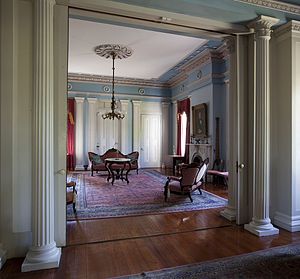 The Architecture of Sturdivant Hall In Selma Alabama
The Architecture of Sturdivant Hall In Selma AlabamaThe Architecture of Sturdivant Hall
The magnificent house is virtually one of a kind. It is a two-story brick home that is stuccoed to have an ashlar look in appearance.
The front façade is what really sets it off, as it features 30-foot Corinthian columns that are scaled in hexastyle portico.
This front portico is than accessed to the second floor by a magnificent, cantilevered balcony that features intricate cast iron railings.
Then to top it off, both levels feature identical doorways surrounded by elaborate Greek Revival full Corinthian columns that are located on each side of the doors.
However, that is not the only stunning features of Sturdivant Hall as the side elevations are also quite elaborate.
One side features a small, cantilevered balcony with a wide front porch that is surmounted by another balcony on the other side.
The interiors of the house were made to reflect the taste of opulence that was encompassing the south at the time.
The first floor has elaborate plaster work as well as millwork in the drawing room and lady's parlor room.
Both rooms also feature doors that are surrounded with Corinthian columns and are ringed by pilasters that are paneled, and then topped with plaster cornicles.
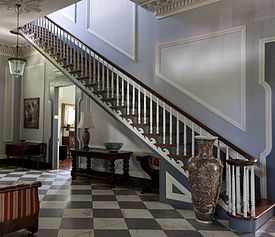 Staircase at Sturdivant Hall
Staircase at Sturdivant HallThe Folklore
All of this splendor and grandeur is overshadowed by the folklore of Sturdivant Hall that is very easy to describe; it may be haunted.
At least that is the legend and folklore of the house. There is one very predominate ghost story associate it, the return of John Parkman to the house.
It is rumored that Parkman and his family vowed NEVER to leave the house and when it was taken from them, the seeds were planted for the folklore.
Parkman’s two small girls have also been seen in the mansion looking out of the upstairs windows.
These two small girls have also been seen in their bedrooms where toys and clothes are often strewn about for no reason.
This folklore, while never actually proven, is still very much alive and believed by people that work in or live near the house.
References
https://www.isjl.org/alabama-selma-encyclopedia.html

Alabama Gift Store
Numerous Items for You and Your Family to Enjoy
See it here at the Gift Store
Copyright 2019-2023 Alabamabackroads.com
All Rights Reserved
